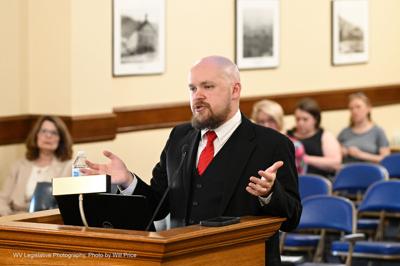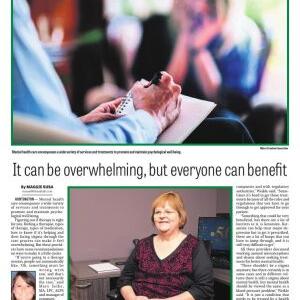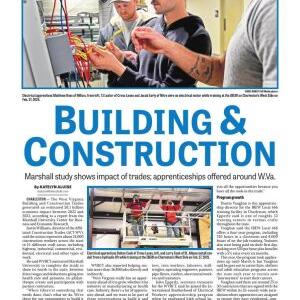CHARLESTON �����Ƶ� Jeremiah Samples didn�����Ƶ�t mince words.
In a report to the West Virginia Joint Health Committee during the interim legislative session earlier this week, Samples, senior policy advisor for the West Virginia Legislature, sent a clear message about drug abuse and drug-related deaths in the Mountain State:
�����Ƶ�We�����Ƶ�re the worst.�����Ƶ�
Samples was unapologetic.
�����Ƶ�I won�����Ƶ�t bury the lead,�����Ƶ� he said. �����Ƶ�The bottom line is that we have not made enough progress on this crisis. We�����Ƶ�re nowhere near where we need to be. Our data �����Ƶ� related to other states, and even our own expectations �����Ƶ� has fallen far short.�����Ƶ�
Samples �����Ƶ� a former deputy director for the West Virginia Department of Health and Human Resources �����Ƶ� walked legislators through data comparing West Virginia to the rest of the country, saying the state is �����Ƶ�an outlier�����Ƶ� in the drug epidemic since it was drastically outpacing other states�����Ƶ� statistically in poor drug outcomes.
Samples said the drug crisis costs West Virginia at least one-eighth of the state�����Ƶ�s total economy bsed on spending on health care, substance use treatment, criminal justice costs, the societal burden of fatal overdoses and lost worker productivity, citing �����Ƶ�hundreds of millions in direct expenditures from SUD (substance abuse disorder.)�����Ƶ�
He said, �����Ƶ�One study said $8.8 billion a year in impact. Another study said $11.3 billion a year in impact, just on the economy, a 12% economic drag on our GDP (Gross Domestic Product), annually...then there�����Ƶ�s hundreds of millions more we know that we�����Ƶ�re spending that are indirect, for example, child protective services, the child welfare crisis, there are hundreds of millions in indirect costs in just child welfare alone.�����Ƶ�
�����Ƶ�Not keeping pace�����Ƶ�
Samples presented data that illustrated that �����Ƶ�failures have consequences.�����Ƶ�
�����Ƶ�We�����Ƶ�ve led the nation since 2010 and every year since in fatal overdose deaths. In fact, we�����Ƶ�ve seen exponential growth in that rate since that time,�����Ƶ� he told the committee.
The data demonstrated that, while West Virginia had seen a decrease in overdose deaths, it was still much higher because the rate of decrease is not on par with other states.
For example, he said, the overdose death rate is 36.4% higher than the next worst state, 151% higher than the state with the lowest rate, and 85.6% higher than the national average.
Plus, the state experienced a staggering increase in overdose deaths during the COVID-19 pandemic. �����Ƶ a result, he noted, �����Ƶ�West Virginia is not keeping pace with other states.�����Ƶ�
According to his presentation about drug use in West Virginia:
- About 208,000 residents used illicit drugs in the last month, according to a survey by the .
- There were 1,335 known overdose deaths in the mountain state in 2022, according to the .
- West Virginia has the highest death rate for working-age adults in the country.
- From 1999 to 2022, West Virginia�����Ƶ�s overdose deaths increased by 1,680%.
- Most mothers who have children born with Neonatal Abstinence Syndrome (NAS) and drug exposure are likely to have children with the NAS thereafter.
- Medicaid is the highest insurance payer in the state for substance abuse disorder, serving 50,000 annually.
- There were 2,460 babies born with intrauterine drug exposure in 2020, but only 712 babies were screened by Child Protective Services that year.
- enter foster care. The state has consistently ranked 49th and 50th in the country for the number of children on welfare in the country. There are also only two years �����Ƶ� 2010 and 2015 �����Ƶ� where West Virginia has not ranked worst in the country for foster care rates.
�����Ƶ�We can�����Ƶ�t sustain that as a society,�����Ƶ� Samples said. �����Ƶ�It�����Ƶ�s crippling to the state."













